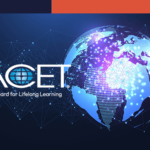Facilitator Guides as a Roadmap to Adaptable Instruction
Written by Dr. Brie Nelson
Facilitator guides as a roadmap to adaptable instruction helps instructors to navigate the diverse terrain of learning environments. They are essential tools for instructors in various learning settings, helping them outline key topics, provide instructions, and ensure all necessary information is covered to lead learners toward academic success. Similar to how a roadmap empowers drivers to reach their destination confidently, facilitator guides empower instructors to navigate different learning environments effectively and meet the needs of all learners. They enable instructors to create positive learning experiences that boost learner engagement, improve knowledge retention, and enhance overall satisfaction.
Comprehensive Support for Instructors
Facilitator guides offer a structured teaching approach, providing clear instructions on content delivery and adaptable resources. This helps instructors plan and execute engaging learning sessions, ensuring comprehensive content coverage and achieving learning objectives. They provide guidance on logical presentation and strategies to enhance learner retention of information.
Facilitator guides provide clear instructions for delivering content and managing the learning environment, which can significantly benefit new instructors and those teaching in unfamiliar settings. For instance, they often include guidance on initiating discussions and crafting open-ended questions to foster dialogue and active participation among learners. Additionally, these guides offer valuable tips for handling challenging situations, such as managing disruptive behavior or navigating group dynamics when learners have differing levels of experience or knowledge.
Facilitator guides offer a range of adaptable resources, such as worksheets, handouts, and activities. These resources can be customized to meet the specific needs of individual learners or groups, empowering the instructors to address the diverse learning requirements of their learners more effectively. For example, a basic math skills worksheet can easily be modified to challenge advanced learners with more complex problems. Similarly, activities initially designed for group settings can be adapted for individual use. By utilizing these adaptable resources, instructors can provide a personalized learning experience that yields better outcomes for all learners.
Support for Diverse Learners
Facilitator guides play a crucial role in supporting diverse learners by providing a framework that prioritizes inclusivity, equity, and accessibility in the learning environment, ensuring that all learners feel valued and supported. They offer clear objectives, multiple learning modalities, accommodations for learners, and cultural sensitivity. The following are some ways in which facilitator guides support diverse learners:
- Clear Objectives:Clear objectives in facilitator guides empower learners to track progress, maintain motivation, and achieve learning goals in each session or module, regardless of their background or learning style. For example, outlining specific skills or knowledge at the session’s outset enables learners to track progress and receive practical guidance towards achieving those objectives.
- Multiple Learning Modalities:Facilitator guides provide a diverse range of learning activities, including visual aids, hands-on activities, group discussions, and written assignments, catering to diverse learning modalities such as visual, auditory, kinesthetic, and interactive approaches. This ensures that all learners can engage with the material according to their preferences and needs, ultimately leading to a more effective and enjoyable learning experience.
- Accommodations:Facilitator guides frequently incorporate accommodations like extended assignment deadlines, alternative assessment formats, and assistive technologies to support learners’ needs and ensure fair and inclusive opportunities for all. This may involve providing extra time for assignments or alternative assessment methods. By accommodating diverse learners, facilitator guides foster an inclusive learning environment conducive to the success of all participants.
- Cultural Sensitivity:Facilitator guides demonstrate cultural sensitivity by acknowledging and respecting learners’ diverse cultural backgrounds through activities that value and celebrate cultural differences. This fosters an inclusive and respectful learning environment where learners can feel comfortable sharing their perspectives and experiences.
Key Components of Your Roadmap
A well-developed facilitator guide is a comprehensive document offering instructors extensive guidance and support. It empowers them with tools such as clear learning objectives, various learning activities, essential instructional materials, practical facilitator tips, and effective assessment tools to create dynamic and engaging learning experiences for all participants. Regardless of the learning environment, a facilitator guide typically includes the following key components:
-

View Sample Facilitator Guide Overview:The overview section should include a brief description of the training program, target audience, and overall structure of the guide. This can include specific learning objectives, measurable goals, and expected outcomes for each session, module, or course. It should also outline the materials, resources, and technology required to deliver the training, such as PowerPoint slides, handouts, interactive tools, or online platforms, along with any additional instructions or notes for facilitators. This ensures facilitators are well-prepared to deliver practical training.
- Learning Activities:Specify a range of learning activities to include. These can be interactive lectures, group discussions, case studies, role-playing exercises, or hands-on simulations tailored to engage learners and reinforce the learning objectives.
- Timing and Scheduling:Provide a structured timeline for each session, specifying the duration of activities, break times, and time allocations for discussions, interactive tasks, and assessments to help instructors maintain a smooth session flow. This allows instructors to keep the course on track and cover all learning objectives within the allotted time.
- Instructional Materials:Essential instructional materials, such as PowerPoint slides with visuals, handouts with critical points, interactive worksheets for activities, and recommended readings, should be included to support instructors in delivering practical sessions and reinforcing key concepts. Providing a brief example or checklist of these materials can assist instructors in preparation. All materials should align with learning objectives to reinforce critical concepts.
- Facilitator Tips: Provide practical tips and strategies for instructors to effectively manage time, engage learners, address challenges, and promote inclusivity. Including specific examples or scenarios can illustrate how to apply these tips in different teaching contexts, enhancing their effectiveness. Topics may include managing complex learners, handling questions and comments, and creating a positive learning environment.
- Assessment and Evaluation: Include assessments and evaluation tools that measure the effectiveness of the learning experience. These could be formative quizzes, summative exams, participant surveys, or feedback forms. Providing a brief explanation or criteria for selecting appropriate assessment tools can guide instructors in choosing the most suitable methods for evaluating the learning outcomes.
A well-developed facilitator guide is a comprehensive document that aids instructors in creating engaging and compelling learning experiences. It enhances the learning experience by incorporating key components, such as clear objectives, multiple learning modalities, accommodations, and cultural sensitivity. Facilitator guides contribute to an inclusive learning environment by celebrating diversity, ensuring equitable opportunities for all learners, and promoting inclusivity and cultural sensitivity
In Summary
Facilitator guides are indispensable tools for educators, providing a clear roadmap to navigate the complexities of diverse learning environments. Much like a roadmap guides travelers to their destinations, these guides empower instructors to lead learners toward academic success by offering comprehensive support and adaptable resources. By outlining clear objectives, accommodating diverse learning styles, and promoting cultural sensitivity, facilitator guides ensure inclusion and support for all learners. They enable instructors to create engaging learning experiences that foster increased engagement, enhanced knowledge retention, and overall learner satisfaction.








